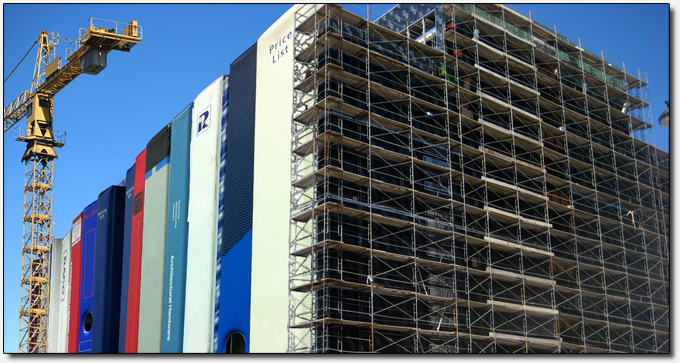|

AVAproject users have come to rely upon the product, pricing and technical information offered by AVAware's architectural product catalogs. Users are now given an insider's view of the process.
Architectural product catalogs are an essential resource for the detailers and estimators that rely on AVAproject to manage their project bids and submittals. For nearly twenty years, AVAware has published an ever-growing catalog library containing product and pricing information from dozens of leading industry manufacturers. An in-house team of experts curate content from manufacturers' printed price books and translate it for use with AVAproject.
For the most part, the process undertaken to deliver this high quality content has been in a proverbial "black box"; everyone knows the data gets there, just not necessarily how. It's the intention of this article to shed some light on the efforts taken to accomplish this involved task.
Catalog Releases
Most industry people are aware that the frequency of catalog releases and updates from the various manufacturers has increased dramatically in recent years. It was not long ago that most brands published catalog updates annually, with perhaps a few small supplements throughout the year. Whether it's in response to industry trends, fluctuations in the costs of the materials and labor, or simply the relative ease with which catalogs can be published digitally – catalogs are being updated like never before. Major manufacturers such as Assa Abloy and Allegion release up to four updates each year, usually in two currencies. While these groups represent approximately thirty individual catalogs, most of which get updated as often as quarterly, they still represent only a fraction of the entire catalog library that AVAware maintains.
Bringing In The Data
It's a commonly held misconception that manufacturers' price books are simply scanned or imported to create their electronic counterparts. Unfortunately nothing could be further from the truth! As most users know all too well, the format of a printed price book often varies greatly from one page to the next, let alone between books. Beyond that, the nature of the actual products. The wide spectrum of product types means that the number of choices (variables) and options offered for each is as diverse as the offerings themselves. Most doors, frames and architectural hardware are configured for the specific application they are intended for and are therefore highly customized – often with specific build rules for each. This differs greatly from most other commercial product catalogs that can be expressed simply as a list of SKUs.
The implication of this complexity is that products need to be manually organized and adapted for use in a software-based pricing system. Each and every product, with its various options and build rules needs to be built and configured within the electronic catalogs.
Cleaning Up The Data
Many of the product price books have gotten very large of the years. Some are so diverse in their offerings, that their price books span hundreds of pages. Inconsistencies in terms of the product additions and deletions as well as item pricing can easily develop between the various sections of a given price book. The relative ease with which modern PDF documents can be updated only serves to further this complication. In the past, manufacturers had to physically reprint updated sections of the price book; as such, it was readily apparent where changes have been made. With the advent of the PDF files, the entire catalog is normally reissued in its revised state. Even when manufacturers make an effort to identify sections that were modified, many are often omitted.
The net effect of all this is that the catalog team must manually verify each and every product and price in each and every updated catalog against the data in the electronic catalog. This manual re-check is generally followed by a series of emails exchanged with the manufacturers in order to verify and correct pricing discrepancies. All of this is done in an effort to provide the most accurate and detailed price books possible to AVAproject users.
Supplementing The Data
Amongst the most useful features of the AVAware catalog library is the supplemental data added for individual products. Details such as hand and keying rules, standardized categories, door and frame preparations and catalog cut pages references are manually curated by the catalog development team. These additional pieces of information are used by AVAproject to perform a variety of automated tasks based on the products selected. Hardware schedules are sorted based on categories, product handing is assigned based on the handing of opening, doors and frames are prepped to receive selected hardware and relevant catalog cuts are added to the submittal package – all based on the data contained in the product catalogs.
Getting Them Out On Time
Catalog updates are always accompanied by an "effective date" – the date after which it comes into effect, and the point after which customers are expected to price based on the updated books. Despite their best efforts, manufacturers don't often provide nearly as much lead time as the catalog team would like in order to thoroughly review and update the product catalogs. As an example, the Assa Abloy group of catalogs alone represents over 2000 pages of product information. The AVAware catalog team continues to grow as quickly as the library they maintain in order to keep up with the increasing demands of the accelerating price book updates.
The AVAware catalog library and associated catalog cuts are offered on an annual subscription basis to users of the AVAproject estimating and detailing system.
For additional information, general inquiries or to arrange an online product demonstration, please contact AVAware customer service.
|